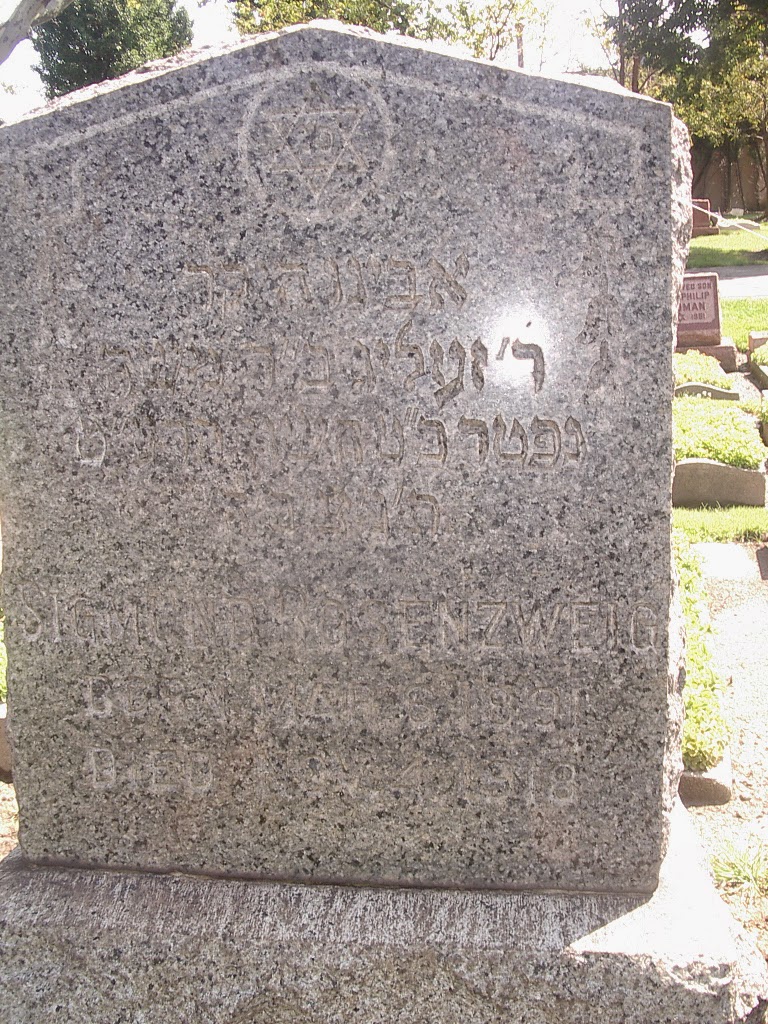Friday, 3 Elul 5774
Yochanan was born the third of Tishrei, the day after Rosh Hashanah. He should be turning forty a month from today.
I have known Sammy Hilberg for nearly fifty years and his wife Bryna almost that long. We made aliyah as part of the same gar'in (=settlement group) to Kibbutz Alumim, adjacent to the Gaza fence. Yochanan and his older brother Meir were born while we were all still living on the kibbutz.
We left the kibbutz about the same time - they to Kiryat Arba, adjacent to Hevron, and we to the desert town of Yeroham. We stayed in touch during those first years, which included the birth of their first daughter. Then they moved to Netzer Hazani in the unpopulated southwest corner of the Gaza Strip, not far from the ocean . One of the communities that constituted Gush Katif. Sammy, a mechanic by training, learned to grow hothouse tomatoes.
The first time I saw them in Netzer Hazani was when I was stationed there during a stint in the reserves. Their second daughter was born while I was stationed there. Later they had a third son and a third daughter.
Seventeen years ago, on a Thursday night, the third of Elul, Yochanan and eleven of his comrades in the naval commandos were killed on a mission in Lebanon. He was buried Friday in the Neve Dekalim cemetery in southern Gush Katif.. A month later was his twenty-third birthday.
Bryna spoke every year at the graveside memorial. A military service, with a naval contingent led by officers in white. She spoke as a mother telling us - and Yochanan - how she felt that day and in the days and years since, talking about her inability to fulfill her basic maternal role of protecting her son.
I was able to attend most of those memorial services and some of the weddings as one after another married and began building their own families.
Nine years ago, the Hilbergs, like all the residents of Netzer Hazani and the rest of the Gush Katif communities, became refugees, thrown out of their homes by their own government. The homes were destroyed so as not to turn them over to the Arabs. And the youth center that had been built in Yochanan's memory.
The Arabs destroyed the hothouses for reasons that made some kind of sense to them. It wasn't to build something for their own people.
It was supposed to bring peace with Gaza, as the Arabs were expected to take responsibility for their own welfare. We were no longer to be there and they would have no further excuse to attack us.
Sammy and Bryna and some of the others from Netzer Hazani were resettled on Kibbutz Ein Zurim, with a vague semi-refugee status.
And after eight years less one week, the army dug up Yochanan's body - together with the others buried in Neve Dekalim. Nearly fifty altogether. Many, including Yochanan and another soldier, were reburied in Nitzan, a refugee community on the coast between Ashkelon and Ashdod.
The second full-blown funeral was very difficult, perhaps moreso for the older brother Meir who had been abroad at the time of the first. The navy sent its people, as always; the younger ones no longer having any personal memory of Yochanan and his comrades in arms.
Sammy announced that this second burial place was to be considered temporary.
A week later, we went back to Nitzan for the annual memorial. There are no words, but Bryna found them then anyway.
In the ensuing years, the silence of the memorial service has been punctuated by the grandchildren. Mostly the same people come. And Bryna speaks. Her mother has a walker now, but is alert and seems well.
This year was different. It wasn't so much Bryna the mother, but Bryna the citizen, speaking for all the residents of the area who have endured the last months of shelling and rockets. She recalled that people who worked side by side with them in the hothouses were now shooting at them. She recalled that some of those same Arabs came to console them when Yochanan was killed. And she recalled that they had been expelled from their homes and their lives in what was supposed to be a move for peace.
Yochanan Avraham ben Bryna and Shemaryahu Shemuel should be turning forty in a month. He has been in his temporary grave in Nitzan for nine years, a year longer than in Neve Dekalim.
May his soul be bound in life,
may G-d avenge his blood
and may his family and all of Israel find peace.
 |
| The cover of the memorial book, produced by family and friends |

















.JPG)

